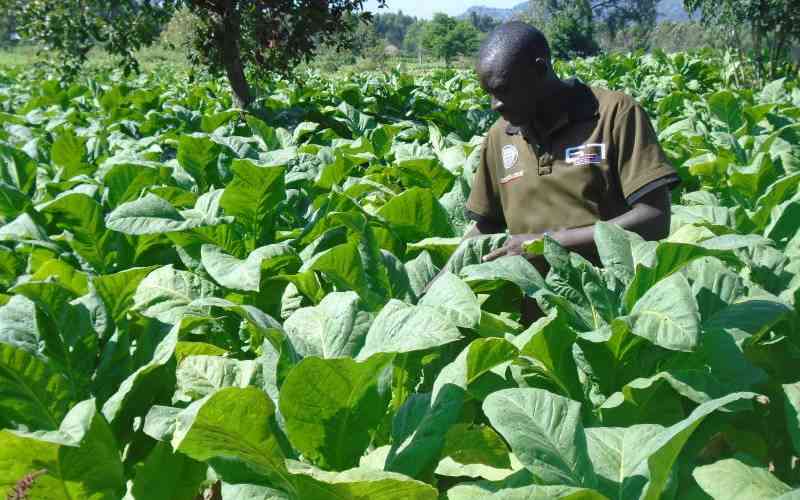Poor earnings from tobacco over the last 30 years have forced millions of Kenyan farmers to abandon the venture for other alternatives.
This is as farmers influenced by incentives from tobacco companies decreased between the two waves – from 50.6 per cent in 2017 to 24.7 per cent in 2018, according to a report by two lobby groups.
“This likely reflects market shifts on the part of the tobacco leaf-buying firms as companies dropped coverage of some geographic areas while focusing on others. The farmers reported considerable uncertainty in which firms were contracting in this period and where,” said the survey by the International Institute for Legislative Affairs (IILA) and The University of Illinois at Chicago “Tobacconomics” (a collaboration of leading researchers who have been studying the economics of tobacco control policy for nearly 30 years).
The consortium conducted two waves of a household survey of nationally-representative samples of small-scale tobacco farmers and former tobacco farmers in Meru, Migori and Bungoma and Busia counties and released the report dubbed The Economics of Tobacco Farming in Kenya: A longitudinal Survey.
Farmers were also asked about the likelihood of growing tobacco in the future considering typically low and inconsistent income from growing tobacco. The report shows that farmers are unlikely to grow tobacco in the future, even in regions such as Migori that have consistently grown tobacco on a large scale.
“An economic prosperity narrative is consistently pushed by the tobacco industry to suggest that farmers who grow tobacco are better off than farmers who do not grow tobacco in the same region. The survey results indicate, however, that there is no statistically significant difference in assets between current tobacco farmers and former tobacco farmers.”
It also emerged that tobacco farmers do not have more food security than their peers who have stopped growing tobacco.
The report says the fact that farmers are considering switching from tobacco was good progress for their households’ livelihoods, especially economically and healthwise.
“One of the most striking findings in this survey is the relationship between median household resources and the decision to continue growing tobacco in both periods.”
With household resources referring to total earnings by households, including subsistence production by families, the survey found that farmers who grew tobacco in both waves reported the lowest earnings of Sh86,850.
However, households that shifted away from tobacco experienced an increase in household resources to Sh120,965. “This strongly indicates that shifting away from tobacco has a positive impact on household resources. We also observe that households that did not grow tobacco in either period had the most resources among all categories, with a median of Sh196,600.”
Worse off economically
On the contrary, the research notes that households that previously grew tobacco but decided to shift back to growing the crop experienced smaller median resources of Sh133,880 suggesting that returning to tobacco farming makes a household worse off economically.
“Given the dim prospects for tobacco farmers, it is a puzzle why farmers cultivate tobacco at all. The answers to this question that emerge from this research suggest real opportunities for helping farmers shift away from tobacco and towards greater levels of prosperity.” It charges industry and government to redouble efforts in encouraging, facilitating, and supporting initiatives by counties to develop supply and value chains and promote alternatives to tobacco growing.
“For instance, officials in Migori County have worked with development partners to construct a sweet potato processing plant which provides farmers with a ready buyer of this crop and can provide a source of cash that is so attractive about tobacco,” note IILA and Tobaconomics.
“They have also promoted aquaculture operations along the shores of Lake Victoria. They have actively helped farmers improve the productivity of their banana crops. And they have been experimenting with programs that have introduced dairy cows and distributed grafted avocado seedlings that may serve as an eventual export crop to satisfy the high demand in China.”





















Discussion about this post